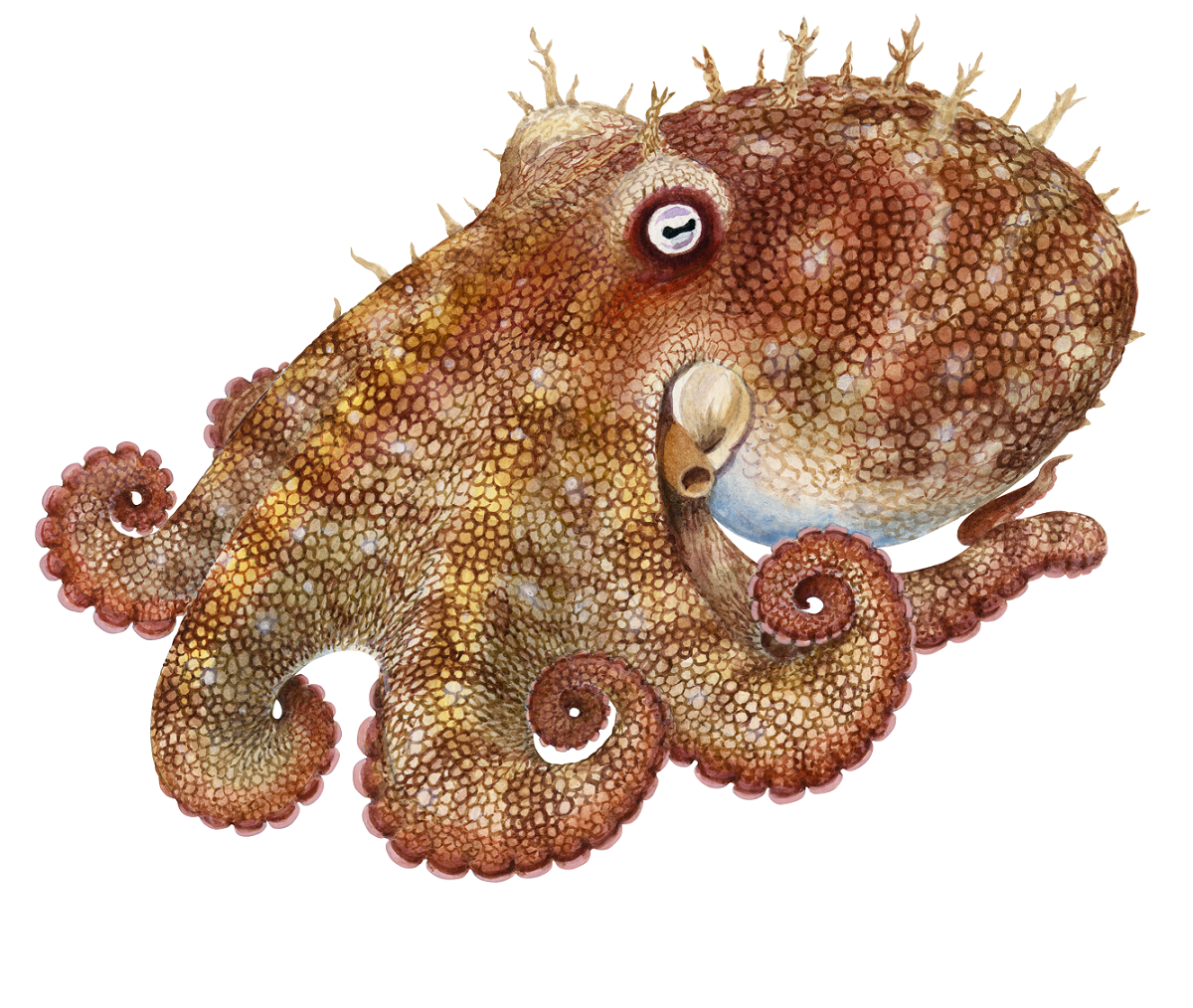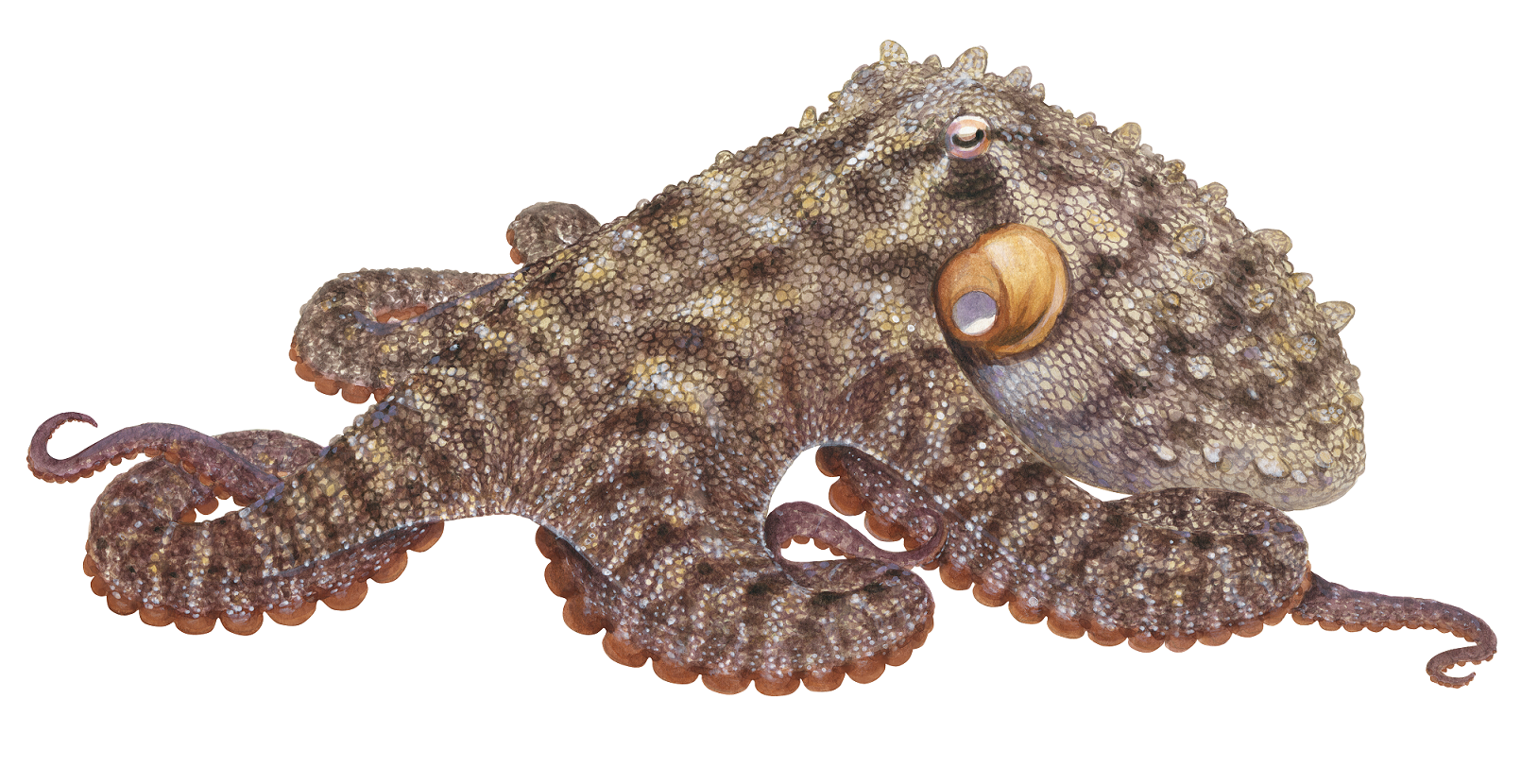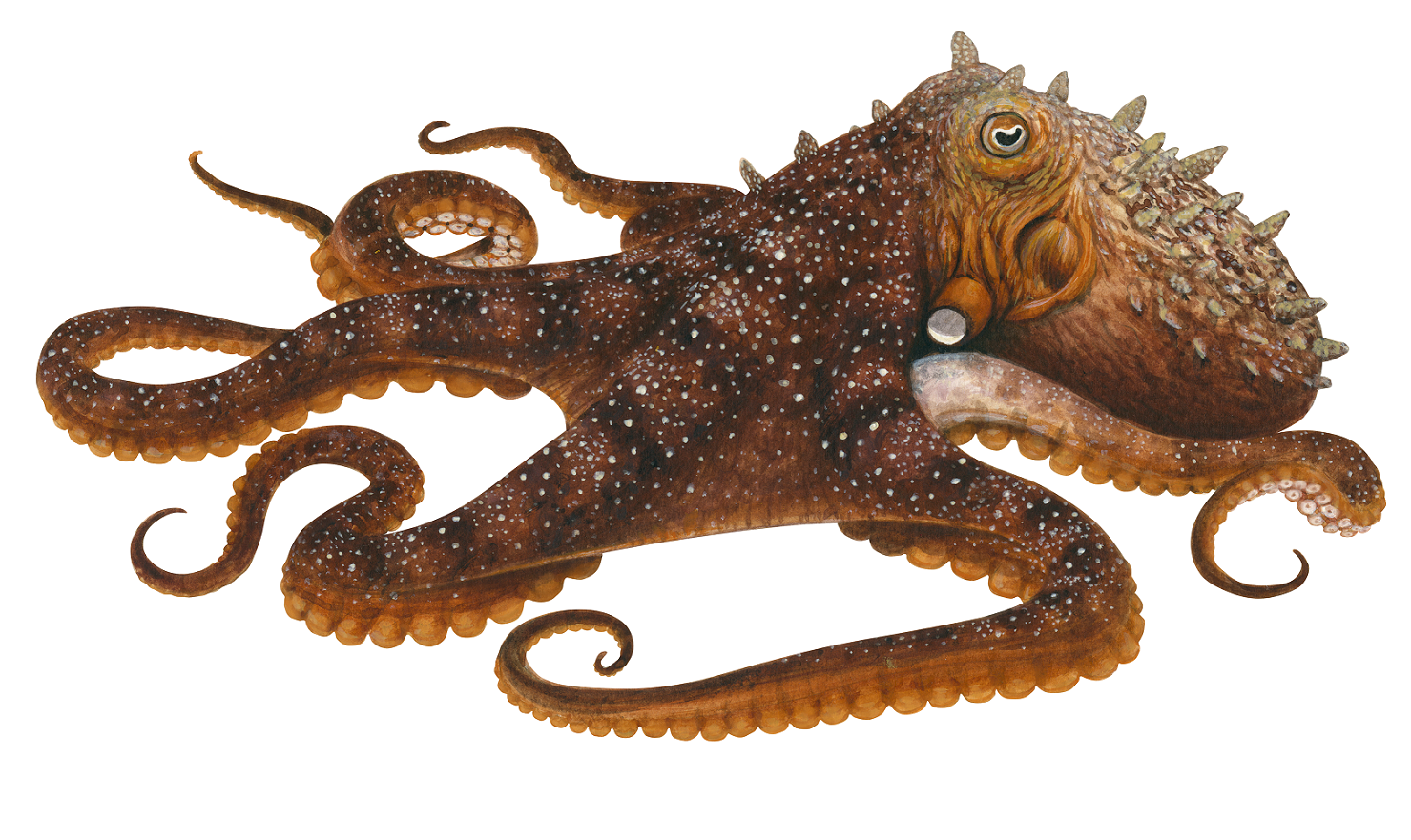Biology
All three octopus species harvested in Tasmania are short lived and fast growing. A summary of the biology of the three species is given below.
Pale Octopus
Octopus pallidus

| Habitat | Sand and mud habitats to depth of 600m. | Norman (2000); Edgar (2008) |
| Distribution | South-east Australia, including Tasmania. | Norman (2000) |
| Diet | Crustaceans and shellfish (bivalves). | Norman and Reid (2000); Norman (2000) |
| Movement and Stock Structure | Limited movement and dispersal from natal habitat. Eastern and western Bass Strait populations likely to be two discrete sub-populations. | Doubleday et al. (2008) |
| Natural Mortality | Undefined but potentially high. | |
| Maximum Age | Up to 18 months. | Leporati et al. (2008b) |
| Growth | Highly variable, partly dependant on water temperature and hatching season. Max weight: 1.2 kg. Growth is initially rapid in the post-hatching phase, before slowing down. Growth has been represented by a 2-phase growth model with an initial exponential growth phase followed by a slower growth phase. Average growth in the first 114 days was estimated at ?=0.246?0.014? in spring/summer and ?=0.276?0.018? in summer/autumn, where W is the weight in g and t is the age in days. | Leporati et al. (2008a); André et al. (2008) |
| Maturity | Size at 50% maturity for females reached at 473g. Males appear to mature earlier (<250 g). | Leporati et al. (2008a) |
| Reproductive biology | Semelparous (i.e. reproduces only once before dying). Spawns all year round with peaks in late summer/early autumn. Low fecundity (<1000 eggs); egg length 11-13 mm. Benthic eggs with active brooding by females. Large benthic hatchlings ~0.25 g. | Leporati et al. (2008a) Leporati et al. (2008c) |
Gloomy Octopus
Octopus tetricus

| Habitat | Rocky reefs and sand habitats in shallow waters, up to 30 m depth. | Norman (2000); Edgar (2008) |
| Distribution | Subtropical eastern Australia and northern New Zealand, increasingly found in Tasmania. | Norman (2000) |
| Diet | Crustaceans (crabs, lobster) and shellfish (gastropods, bivalves). | Norman and Reid (2000); Norman (2000) |
| Movement and Stock Structure | Undefined. | |
| Natural Mortality | Undefined. | |
| Maximum Age | Maximum of 11 months. | Ramos et al. (2014) |
| Growth | Max weight: up to 2.6 kg. Growth between 49 g to 2.64 kg described by the growth equation: ?=3.385(1−?−0.07642?)3 where W is the weight in kg and t is the age in days. Growth in the field may only be about 40% of growth in aquarium. | Joll (1977, 1983) |
| Maturity | Size-at-50% maturity was 132g for females and 92g for males. Age at 50% maturity 224 days for females and 188 days for males. | Ramos et al (2015) |
| Reproductive biology | Semelparous (i.e. reproduces only once before dying). Spawning season undefined but likely all year round. High fecundity (>250 000 eggs); egg length ~2.2 mm. Benthic eggs with active breeding by females. Planktonic hatchlings 2 – 5 mm length settling at 0.3g (8 mm). | Joll (1983) Ramos et al (2015) |
Māori Octopus
Macroctopus maorum

| Habitat | Rocky reefs, beds of seagrass or seaweeds, sand down to 549 m. | Norman (2000); Edgar (2008) |
| Distribution | Temperate and sub-Antarctic waters of New Zealand and southern Australia. | Stranks (1996) |
| Diet | Crustaceans (crabs, lobsters), fish, shellfish (abalone, mussels) and other octopuses. | Norman (2000) |
| Movement and Stock Structure | Several genetically distinct populations. At least two populations in Tasmania: north-east Tasmanian population and south-west Tasmanian populations (which extends to South Australia). Adults of the species aggregate all year-round in Eaglehawk Bay on the Tasman Peninsula. | Doubleday et al. (2009) |
| Natural Mortality | Undefined. | |
| Maximum Age | Maximum of 7.3 months from ageing study but lifespan potentially up to 3 years. | Doubleday et al. (2011); Grubert and Wadley (2000) |
| Growth | Max weight: 15 kg. Growth equation undefined. | Stranks (1996) |
| Maturity | Size-at-50% maturity undefined. Female mature between 0.6 to 1 kg. Weight-specific fecundity range from 6.82 to 27.70 eggs/gram body. Mating activity is independent of female maturity. | Grubert and Wadley (2000) |
| Reproductive biology | Semelparous (i.e. reproduces only once before dying). Spawning season: spring-summer in New Zealand but appear to mate and lay all year round in Tasmania. Moderate fecundity (5000 – 7000 eggs); egg length 6.5 – 7.5mm. Benthic eggs with active brooding by females. Planktonic hatchlings ~5 mm length. | Anderson (1999) |



